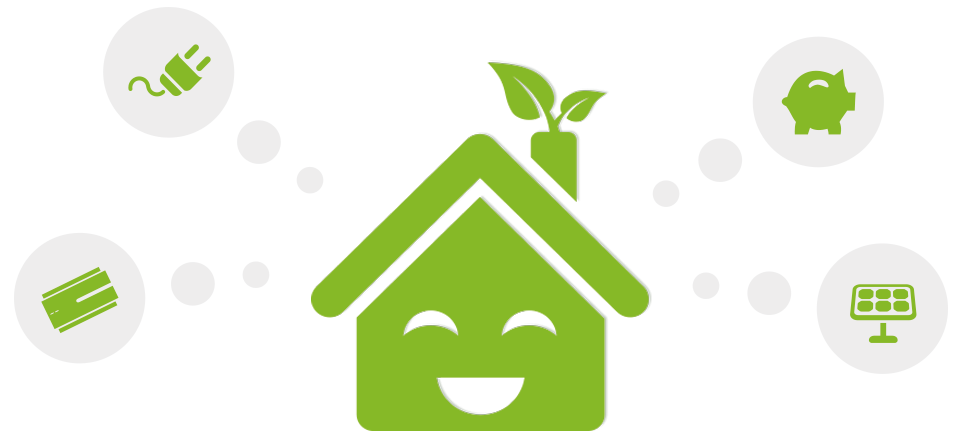مقدمه هوشمند سازی ساختمان
در مبحث مقدمه هوشمند سازی ساختمان، خانه هوشمند مبتنی بر مفهوم تلفیق فناوری های هوشمند، در ساختمانها با هدف افزایش کیفیت زندگی است. این مفهوم یک راه حل خوب برای نگرانیهای عمده در بخش ساختمان یعنی مصرف انرژی و اثرات زیست محیطی است. علاوه بر این، در خانه های هوشمند امکان نظارت و کنترل مداوم برای بیماران وجود دارند.
ساختمان هوشمند (bms) میتوانند رفتارها و فعالیتهای ساکنان را از طریق حسگرها و محرکهای نصب شده در واحد شناسایی کنند. این مطالعه ضمن پرداختن به جنبه های اساسی آنها، مروری بر خانه های هوشمند را ارائه می دهد. این مقاله به طور جامع خانه های هوشمند را تعریف می کند.
مفهوم خانه های هوشمند (ساختمان هوشمند) استفاده از ترکیب فن آوری های مختلف هوشمند است. بنابراین، استفاده از این فن آوری های هوشمند/ دستگاه ها/سنسورها به طور جامع بیان شده است. در فصل مقدمه هوشمند سازی ساختمان (بی ام اس) مزایا و چالش های اجرای ساختمان هوشمند بررسی میشود.
هدف این فصل چشم انداز خانه های هوشمند به سمت شکل گیری آینده های هوشمندتر شهری است. با توجه به استفاده زیاد سوختهای فسیلی، مقابله با تهدیدات زیست محیطی (گرم شدن کره زمین) بسیار مهم است.
این امر باعث شده تا ویژگیهای هوشمندانه مصرف انرژی به یک موضوع اصلی در تعریف خانه هوشمند آینده تبدیل شود. ادغام اتوماسیون و هوشمندی هنوز بخشی ذاتی از خانه های هوشمند است.
در ادامه بحث هوشمندسازی ساختمان سه دهه پیش، خانه اصطلاحا هوشمند یک تئوری مفهومی از ساختمانهای مسکونی در آینده بودند. با این حال، امروزه خانه های هوشمند به تدریج به عناصر ذاتی، سیاست های فعلی شهرهای هوشمند تبدیل می شوند. انتظار میرود مناطق شهری با تأثیر از فناوریهای پیشرفته هوشمند، استفاده از انرژیهای تجدیدپذیر و محیطهای سالم را تقویت کنند.
دلیل محبوبیت خانه هوشمند(بی ام اس)
اخیرا هوشمندسازی خانه به دلیل پتانسیلها و طراحی ابتکاری و فناوریهای جدید خود، محبوبیت بیشتری در حداکثری راحتی ساکنان یافتند. گنجاندن فناوری IT/ICT، فناوریهای خودکار و هوشمند در طراحی، ساخت و مدیریت ساختمان اغلب کلید توسعه خانه هوشمند تلقی میشود.
اطلاعات جاسازی شده در IBs آنها را قادر می سازد تا به نیازهای کاربران، محیط و جامعه پاسخ دهند. این امر همچنین در به حداقل رساندن تأثیرات منفی زیست محیطی و هدر رفت منابع طبیعی تاثیر بسزایی دارد.
هدف هوشمند سازی خانه (بی ام اس)
هدف هوشمند سازی خانه کاهش هزینه های عملیاتی از طریق مدیریت کارآمد انرژی است.
خانه های هوشمند (ساختمان هوشمند) اخیراً برای افزایش کیفیت هوای داخلی (IAQ) کاملاً با شبکه های حسگر سازگار شده اند. امروزه حسگرها و شبکه های بی سیم در درجه اول وابسته به پیشرفت حساسیت رادیویی، مصرف برق بسیار کم، سنسورهای سیستم های ریز الکترومکانیکی (MEMS) و برداشت انرژی هستند. از طریق پیشرفت سنسورهای پیشرفته خودکارآمد، خانه های هوشمند همچنین می توانند از طریق قابلیت یادگیری از محیط و الگوهای رفتاری کاربر از قابلیت خود تنظیمی بهره مند شوند.
مقدمه هوشمند سازی ساختمان – استنباط می شود که ؛ خانه های هوشمند بر اساس پتانسیل ها و مزایای کاوش شده آنها نقشی اساسی در شکل گیری شهرهای آینده دارند. پتانسیل برجسته خانه های هوشمند در اتوماسیون و دیجیتال سازی محیط زندگی و امکانات فن آوری یکپارچه به طور گسترده ای تایید شده است.
از دیگر مزایای اصلی ساختمان هوشمند در شهرنشینی آینده می توان به افزایش امنیت و آسایش، بهینه سازی عملکرد انرژی، کاهش اثرات زیست محیطی، بازده سرمایه گذاری و کاهش سطح هزینه های عملیاتی، بهبود پتانسیل های شبکه، بهره وری و رفاه کاربران اشاره کرد.
اخیراً، خانه های هوشمند برای جوامع آینده به عنوان یک رویای ابتکاری، اما بسیار کارآمد شناخته می شوند. با این حال، تحقیقات، نفوذ تدریجی این مفهوم را در زندگی معاصر تأیید می کنند. اگرچه وجود خانه های هوشمند (بی ام اس) / شبکه های هوشمند / کنتورهای هوشمند به سالها پیش برمیگردد، اما اخیراً مورد توجه بسیاری قرار گرفته است.
سیاست های تشویق / اجباری کردن کاربران برای کاهش مصرف انرژی در ساختمان و نگرانی از تغییرات آب و هوایی در کنار پیشرفت روزافزون IT / ICT، عوامل محرک پیشرفت های مربوطه هستند.
به طور همزمان، اکثر وسایل مورد استفاده در خانه های سنتی هم به صورت محلی و هم به صورت دستی کار می کنند. این کار به طور کلی با فشار دادن یک دکمه انجام می شود. بنابراین، مدیریت و کنترل انرژی ساختمان در چنین فضاهایی در نتیجه به کارگیری چنین دستگاههایی محدود شده است.
متناوباً، خانه های هوشمند امکان کنترل / مدیریت الکترونیکی وسایل هوشمند مانند تهویه مطبوع و غیره را فراهم می کنند. این نشان دهنده همگرایی وسایل کم مصرف و دسترسی در زمان واقعی به داده های مصرف انرژی است که از شبکه حسگرها و رایانه تهیه شده است. خانه های هوشمند چندین سیستم عامل فناوری را در اختیار شما قرار می دهند که عملکردها و خدمات کنترل شده از راه دور / مرکزی را با تمرکز بر نیازهای سرنشینان ارائه می دهند.
هدف اصلی یک خانه هوشمند تأمین اتوماسیون ساختمان، تسهیل مدیریت انرژی و کاهش انتشارات محیطی است. خانه های هوشمند مجهز به فناوری های هوشمند برای اهداف اتوماسیون بتدریج به یک الگوی معمول در بخش ساختمان تبدیل می شوند. این فصل یک مرور سیستماتیک از ادبیات موجود در مورد خانه های هوشمند را ارائه می دهد.
تعاریف خانه هوشمند
محققان تعاریف مختلفی برای خانه های هوشمند ارائه داده اند. که در این بخش از مقاله مقدمه هوشمند سازی ساختمان به آن می پردازیم.
هارپر خانه هوشمند را چنین تعریف کرد:
“خانه ای که ساختاری کاملاً مناسب با دسترسی کافی به ویژگیها، ارتباطات(مانند ارتباط سریال در knx)، کنترل ها، داده ها و فناوری های اطلاعاتی برای افزایش کیفیت زندگی ساکنین از طریق راحتی ، آسودگی، کاهش هزینه ها و افزایش ارتباطات” است. این تعریف شامل مزایایی است که احتمالاً در نتیجه استفاده از خانه های هوشمند قابل درک است. با این حال، شناسی نوع خانه نیز معیار مهمی برای تعریف صحیح این مفهوم است.
Chan و همکاران و Reinisch و همکارانش خانه هوشمند را اینگونه تعریف می کنند:
به عنوان محل اقامت مجهز به یک شبکه ارتباطی، اتصال دهنده سنسورها، دستگاه ها و وسایل خانگی قابل کنترل، دسترسی یا کنترل از راه دور بوده و خدماتی را ارائه می دهد که پاسخگوی نیازهای ساکنان آن باشد.(مانند پروتکل ارتباطی knx)
در این تعریف، سنسورها به عنوان دستگاه هایی استفاده می شوند که برای شناسایی مکان کاربران و اشیا برای اهداف جمع آوری داده استفاده می شوند دما ، مصرف انرژی و غیره.

Ozkan NB و همکاران معتقدند
اصطلاح خانه هوشمند (بی ام اس) یک مفهوم فراگیر است زیرا در اصل به هر نوع اقامت اشاره دارد. یک خانه مستقل، یک آپارتمان یا یک واحد در یک مجموعه مسکونی.
در این رابطه، Demiris و همکارانش استدلال کردند که،
ساختمان هوشمند یک ساختمان اقامتی، مجهز به فناوری است که نظارت برای ساکنان را تسهیل می کند یا استقلال را ارتقا می بخشد و کیفیت زندگی ساکنان را افزایش می دهد. این تعریف استفاده از فن آوری های هوشمند در واحدهای مسکونی برای نظارت بر رفتار ساکنین برای افزایش کیفیت زندگی را برجسته می کند.
در تعریفی دیگر، اسکات توضیح می دهد که
یک خانه هوشمند (bms) متفاوت از خانه ای است که صرفاً به ویژگی های بسیار پیشرفته تکنولوژیکی مانند کنتورهای هوشمند یا لوازم هوشمند مجهز شده باشد. وی تصور کرد که از طریق استفاده از یک شبکه متصل از دستگاه ها و حسگرها، خانه های هوشمند به مصرف کنندگان این اجازه را می دهد که مصرف انرژی ساختمان را موثرتر کنترل کنند.این کار در حالی انجام می شود که به طور همزمان سطح راحتی ساکنین برای انواع فعالیت های خانگی افزایش می یابد.
این فعالیتها شامل گرمایش محیط (از طریق تنظیم خودکار ترموستات با دمای هوا). و گرمایش آب (از طریق شناسایی الگوی مصرف و تامین آب گرم در دما، مقدار و زمان مناسب) میشوند. سنسورهایی که پنجره های باز را در یک اتاق خالی تشخیص میدهند و به صاحبخانه هشدار میدهند.
خدمات خانه های هوشمند ( هوشمند سازی خانه )
مطابق ITU (International Telecommunication Union- United Nation’s special Agency for IT / ICT)، خانه هوشمند قادر به انواع خدمات هستند. این موارد شامل کنترل دقیق وسایل هوشمند (مانند بخاری، تهویه هوا، ماشین لباسشویی و غیره)می باشد. توانایی مدیریت از راه دور دستگاه های الکتریکی، نمایش داده های مصرف و هزینه های مربوطه . همچنین ارتباط بین افزونه های هیبریدی واسط وسایل نقلیه الکتریکی و ایستگاه شارژشان (مثلا صفحات خورشیدی پشت بام) میشود.
مهندسین ساختمانی را که توسط سیستمهای کنترل پیشرفته و لوازم خانگی، به صرفه جویی انرژی خوبی برسد ساختمان هوشمند مینامند.
در نتیجه، خانه های هوشمند واحدهای مسکونی هستند که از طریق شبکه ارتباطی حسگرها، دستگاهها و وسایل خانگی مدرن شدند. و به ساکنان امکان میدهد تا از طریق سیستمهای پیچیده نظارت و کنترل، عملکرد خانه ها را کنترل کنند. اجرای ساختمانهای هوشمند منجر به افزایش کیفیت زندگی، کاهش دادن مصرف انرژی ساختمان، کاهش هزینه انرژی و بهبود امنیت میشود.
تصور از خانه هوشمند
خانه هوشمند به خانه مجهز به حسگر برای نظارت بر جنبه های مختلف با هدف بهبود تجربه ساکنان اشاره دارد. این مفهوم در ابتدا با هدف ارتقاء سطح راحتی کاربران علاوه بر بهبود بهره وری انرژی ایجاد گردید. Kroner بر اهمیت تأمین “همه نیازهای کاربران” به عنوان نتیجه استفاده از ساختمان هوشمند تأکید کرد.
در طول گذشته، فناوری های هوشمند به طور چشمگیری در میان افراد مسن و معلول مورد استفاده قرار گرفته است. این علاقه روزافزون مبتنی بر توانایی خانه هوشمند در حمایت از سالخوردگان / معلولان برای ادامه زندگی مستقل است.
یکی از ویژگیهای اصلی خانه هوشمند استفاده از حسگرهای تعبیه شده جهت نظارت بر فعالیتهای روزمره ساکنان است. بسیاری از محققان عقیده دارند، مفهوم اصلی ساختمان هوشمند فقط در مورد تلفیق فناوریهای نوظهور برای بهبود سطح راحتی نیست.خانه های هوشمند باید به “ویژگی های محلی منطقه شامل ارزش های فرهنگی اجتماعی و زیست محیطی” پاسخ دهند.

انرژی در خانه هوشمند، انرژی در ساختمان هوشمند، انرژی در هوشمند سازی ساختمان
امروزه، نگرانی فزاینده ای نسبت به تأثیرات زیست محیطی صنعت ساخت و ساز وجود دارد. یک سوم انتشار گازهای گلخانه ای جهان توسط ساختمان ها می باشد.
بنابراین، اجرای خانه های هوشمند راه حل امیدوار کننده ای برای کاهش نگرانی های زیست محیطی بخش ساختمان است.
صرفاً با استفاده از حالتهای هوشمند فناوری نمی توان یک ساختمان را یک ساختمان هوشمند(بی ام اس) اعلام کرد. “در طول 20 سال گذشته بسیاری از ساختمانهای مختلف با عنوان “ساختمان هوشمند” برچسب گذاری شده اند. با این حال، استفاده از هوش در ساختمان ها هنوز توانایی واقعی خود را ارائه نداده است”.

